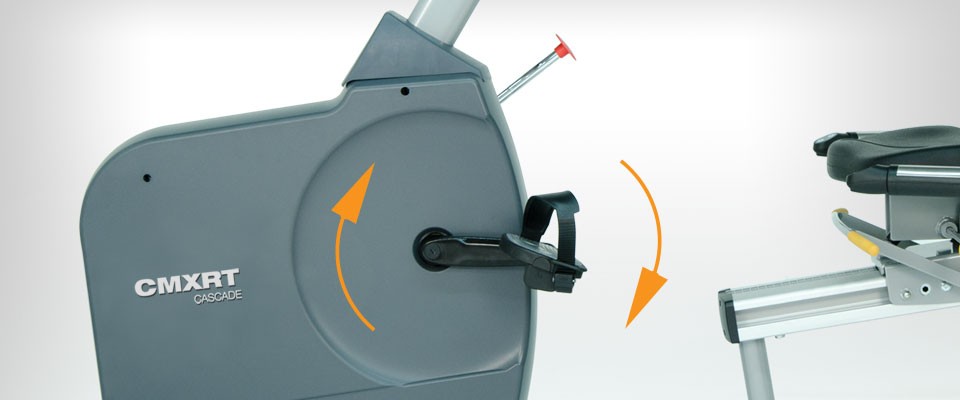Company News
How Cycling Backwards Improves Your Performance
When the design team at Cascade set out to create a better recumbent exercise bike, one of the key features specified for maximum user satisfaction was smooth bi-directional magnetic resistance. This ability to pedal smoothly both forwards and backwards is a great way to vary a workout, but does it really provide benefits beyond – or in addition to – those seen with regular cycling?
A recent study by ACE (American Council On Exercise) set out to evaluate this question. A research team at the University of Wisconsin–La Crosse, led by John P. Porcari, Ph.D., conducted an ACE-commissioned study to determine potential differences in the physiological and electromyography (EMG) responses when pedaling forward and backward on the Cascade CMXRT bike.
The cycling study showed that pedaling backward on the Cascade cycle elicited higher heart-rate and energy-cost values than pedaling at identical workloads in the forward direction. The increase in physiological response was reflected by higher muscle activation of the quadriceps muscles, which is consistent with the subjects’ descriptions of feeling like they had to “pull” the pedals when cycling backward.
“The concept of specificity tells us that pedaling forward should still make up the vast majority of a cyclist’s training,” explains Dr. Porcari, “but the subtle differences in muscle activation seen when pedaling backward can be very beneficial.” Dr. Porcari recommends treating backward pedaling as a change of pace and a form of cross-training that better targets the quads.
Maria Cress, a member of the research team for this study, points out that by improving quadriceps strength by pedaling in the backward direction, cyclists will experience improved strength for regular cycling. “They will be able to work at a higher workload at a lower RPE and heart rate,” says Cress, “which means that incorporating backward pedaling into your routine will eventually make pedaling forward mentally and physically easier.”
Read the full study here https://www.acefitness.org/prosource/104/

